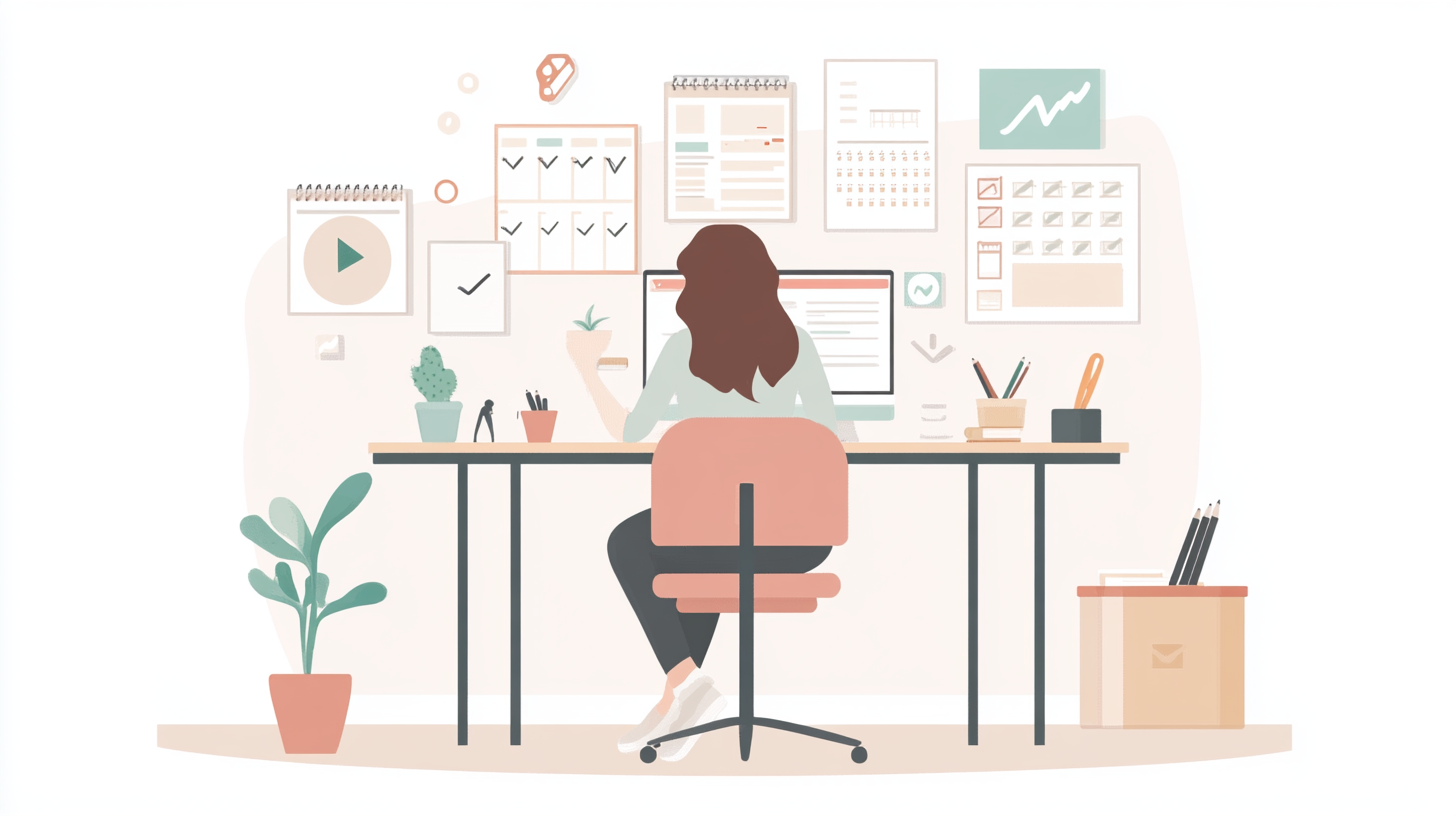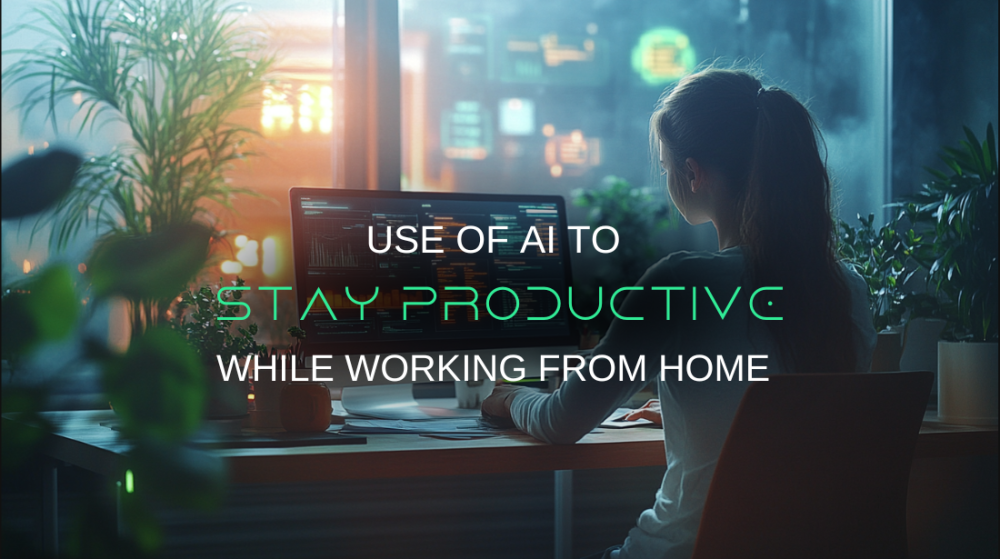Using AI to Stay Productive During Work-from-Home Slumps
Remote work is no longer a temporary fix; it’s a lasting shift in how people operate. According to research, the United States has seen work-from-home days stabilize at around 28%, a fivefold jump from pre-2019 levels. This shift has brought flexibility, but it’s also introduced new challenges, especially when motivation dips or structure fades.
As the home and office continue to blur, AI tools are stepping in not just to support productivity, but to make daily work more manageable, personalized, and consistent.
1. AI-Powered Task & Schedule Management
Managing time efficiently from home often means fighting off constant context switching. AI can help by organizing your day based on real behavior rather than rigid plans. Smart to-do lists adjust priorities in real time, learning from your habits and helping you focus on the most relevant tasks.
Calendar systems powered by AI can also automatically shift meetings to protect periods of deep work, making your schedule more aligned with your productivity patterns. Instead of manually juggling commitments, you gain uninterrupted blocks of focus time that match your natural workflow.
2. Cutting Through Distractions
Home environments come with a unique set of distractions, from background noise to digital interruptions. AI-driven focus tools are designed to detect when your attention drifts and suggest timely interventions.
These systems can guide you to take short pauses before mental fatigue builds up. In parallel, ambient AI features can filter out surrounding noise during video calls or concentrated work sessions. With these quieting aids and alert systems, it's easier to maintain a flow state without having to constantly monitor your surroundings or willpower.

3. Sharper Communication & Collaboration
Communication overload is a common issue in remote work. AI tools help by simplifying how information is captured and retrieved. After meetings, AI can provide structured summaries and searchable transcripts, making it easier to review discussions without needing to revisit entire recordings.
For email and messaging, intelligent filters identify which messages require attention and which can wait, reducing decision fatigue and allowing you to respond with intention rather than urgency. These small shifts in how information is processed can save significant time and mental energy.
4. Mental Energy & Well-being Support
Even with a productive setup, working from home can drain mental energy in subtle ways. AI is now being used to support well-being by prompting timely breaks and checking in on emotional health. These systems recognize when focus is dipping or stress is building and suggest simple, screen-free activities to reset.
Short breaks throughout the day, whether guided by a timer or mood-based nudges help maintain clarity and prevent burnout. Instead of powering through slumps, you're encouraged to reset and return to work with a steadier mindset.
Tools to Use
1. Krisp: Best for Noise-Free Focus
Unwanted background noise can disrupt even the most structured work-from-home setup. A tool like Krisp offers a simple fix, it filters out environmental sounds in real time during calls or recordings. Whether you're working near a busy street or sharing space with others, this app quietly removes the distractions so you can stay focused on your conversations or tasks.
1. Real-Time Noise Removal
This feature actively eliminates ambient sounds such as barking dogs, traffic, keyboard clatter, and echoes. It runs during both live calls and recorded sessions, preserving only the speaker’s voice for better clarity.
2. Customizable Mute Levels
Users can fine-tune how aggressively the app filters sound. This balance allows for effective noise reduction without cutting off natural speech, helping maintain a comfortable audio experience for everyone on the call.
3. System-Wide Compatibility
The tool integrates with most conferencing platforms and microphones. Once activated, it runs in the background, applying noise suppression across apps like Zoom, Teams, and Slack without needing manual toggles.
2. Otter.ai: Best for Meeting Summaries
Taking notes during virtual meetings is often distracting and incomplete. Otter.ai solves this by listening in and converting speech into structured, editable transcripts. Instead of missing key decisions or searching through long recordings, users get organized summaries shortly after each session.
1. Accurate Transcription
It captures spoken content from multiple participants in real time, accurately recognizing voices and converting them into readable text. This reduces the need for manual note-taking and ensures no detail is lost.
2. Live Keyword Highlights
As the meeting progresses, the system automatically identifies and emphasizes relevant words like action items or project names. This allows users to jump to critical parts of the conversation later.
3. Summary Auto-Generation
Once a session ends, a concise summary is produced. These highlights help users understand what was discussed, track deliverables, and follow up without revisiting the entire transcript.
3. RescueTime: Best for Tracking and Understanding Your Productivity
When working remotely, it's easy to lose track of how time is actually spent. RescueTime addresses this by quietly monitoring activity across devices, giving you a full picture of where your attention goes throughout the day. It helps users identify inefficiencies, limit distractions, and create better routines.
1. Automatic Activity Logging
The app runs silently in the background, tracking which apps and websites are used, and for how long. This gives users a breakdown of where their workday is spent without requiring manual input.
2. Daily Productivity Score
Based on the type of activities performed, a productivity score is generated each day. This score helps users spot focus patterns and recognize when they’re most or least effective.
3. Goal Setting and Alerts
Users can define targets, such as limiting social media or increasing time spent on deep work. The system issues alerts when behaviors veer off course or when it’s time to take a break.
4. Time Out: Best for Guided Break Reminders
Continuous screen time can drain mental clarity. A tool like Time Out encourages users to pause, stretch, and reset at intervals that suit their workflow. Instead of rigid schedules, it offers a flexible, thoughtful way to build rest into the day.
1. Custom Break Intervals
Users can set both micro-breaks and longer pauses based on personal needs. The timing is adjustable to fit varied schedules, allowing gentle reminders without causing disruption.
2. Guided Refresh Suggestions
During each break, the app offers ideas for simple, off-screen activities such as breathing exercises or quick physical movements. These prompts support mental resets without requiring extra planning.
3. Pause for Creativity
Some breaks include subtle nudges toward light, creative tasks, like drawing or changing your environment designed to help return to work with renewed perspective and energy.
The Future of AI in Remote Work
As remote and hybrid work continue to evolve, AI is becoming more than just a convenience; it’s becoming a quiet collaborator in the background. Emerging tools are starting to personalize digital workspaces based on behavior and preferences, reducing friction across tasks.
Emotional AI is also gaining traction, with systems that can respond to user mood and energy levels, making support more timely and relevant. As these technologies mature, AI won’t just help you stay productive during slumps, it will help prevent them altogether by shaping workflows that adapt to how you work best.





